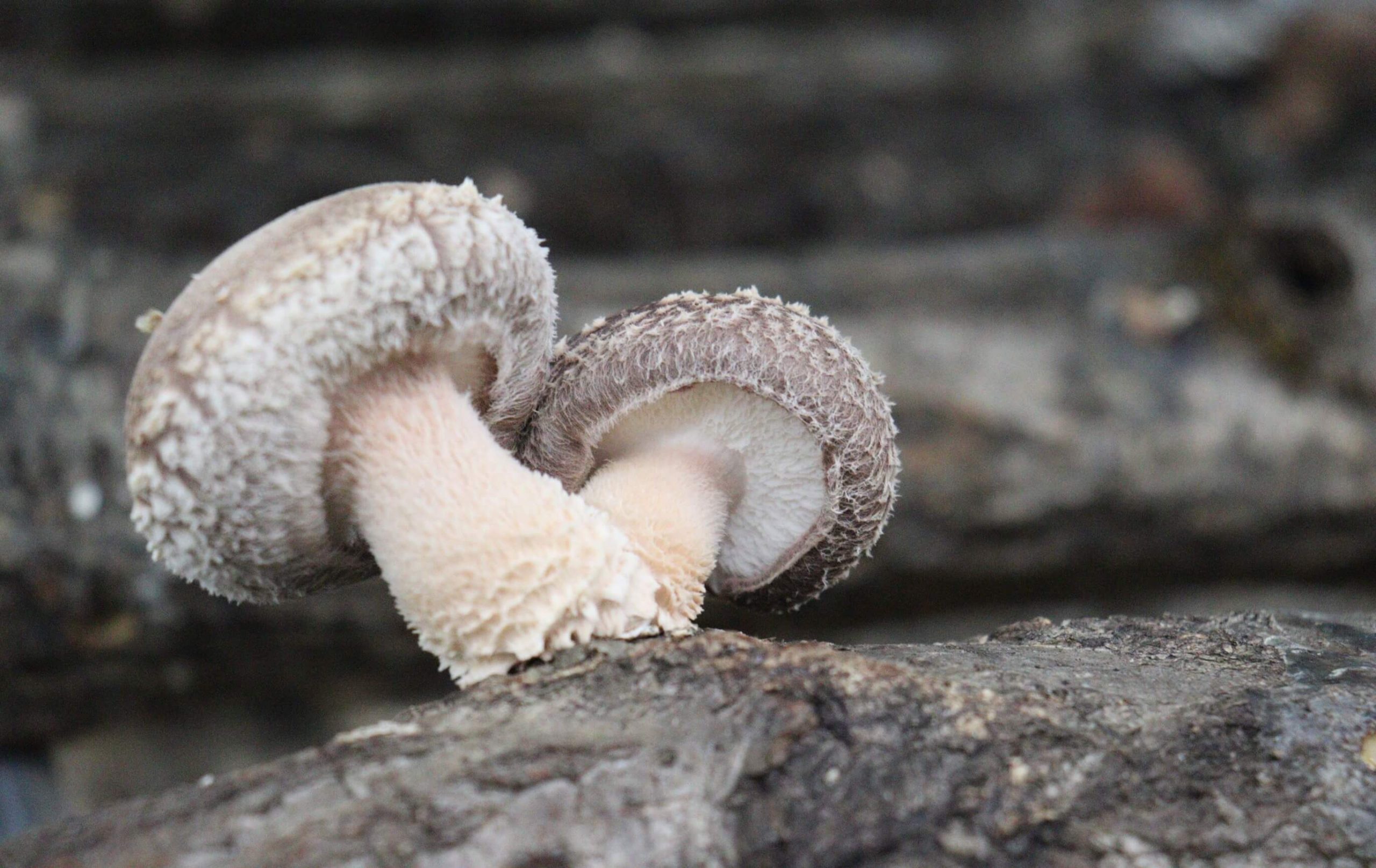Experience a traditional Japanese farmhouse in Satoyama near Tokyo.
features

Updated on:2024.10.23

Would you like to spend a peaceful moment for both physically and mentally?
We would like to introduce a trip where you can casually experience Japan’s satoyama in less than an hour from Tokyo.
A satoyama is a natural environment created with human involvement, and is an environment where the lifestyle of the people living in the land and the surrounding nature are in harmony.
For those who want to experience Japan’s natural environment, traditional Japanese farming, and have the peace of mind, this trip is a must-experience.


Tokorozawa City located in the southwestern part of Saitama Prefecture, just north of Tokyo, is surrounded by a valuable area that preserves a lot of nature while there are lively new commercial facilities.
As far as the eye can see, the area is surrounded by forests and fields, dotted with historic buildings, and the scenery of the satoyama that calms your mind is reflected in your eyes.
This time, we would like to introduce you to a trip that will warm your heart as you experience the beauty of nature closely as well as the traditions and culture of Japan.
Take a short trip from Tokyo and stay in a traditional folk house where you can enjoy a leisurely farm experience, and embark on a journey of simple encounters that you don’t usually get to experience.
IMG_1868.jpg)

Farm with a traditional folk house “Corot”
On this trip, we aim to visit “Corot”, a farm with a traditional folk house built more than 100 years ago.
From Ikebukuro Station, take the Seibu Ikebukuro Line bound for Hanno, and transfer to the Seibu Sayama Line at Nishi-Tokorozawa Station.
If you walk through a quiet residential area for about 15 minutes from “Shimoyamaguchi Station” or “Seibukyujo Station”, you will be greeted by a large zelkova tree that serves as a landmark for Corot.
If you take a peek inside, you’ll see the appearance of an old Japanese farmhouse, with splendid mansions and storehouses.


“Corot” is a farmhouse inn that started with the owner’s desire to make effective use of a vacant old-fashioned house.
This is a self-service facility where guests prepare their meals and lay out their futons themselves.
When you open the entrance door, you will be enveloped in the unique atmosphere of a Japanese house. Just by standing here, you will feel the warmth and excitement of Japanese culture that you cannot experience anywhere else.
Just imagining staying here is exciting.
Next, take off your shoes and go up to the tatami room, and you will be amazed at the size of the room. It is said to be large enough to accommodate up to 20 people.
Let’s take a look at the traditional Japanese farmer’s lifestyle!
Please check the corot website for explanations of each of the facilities introduced below.
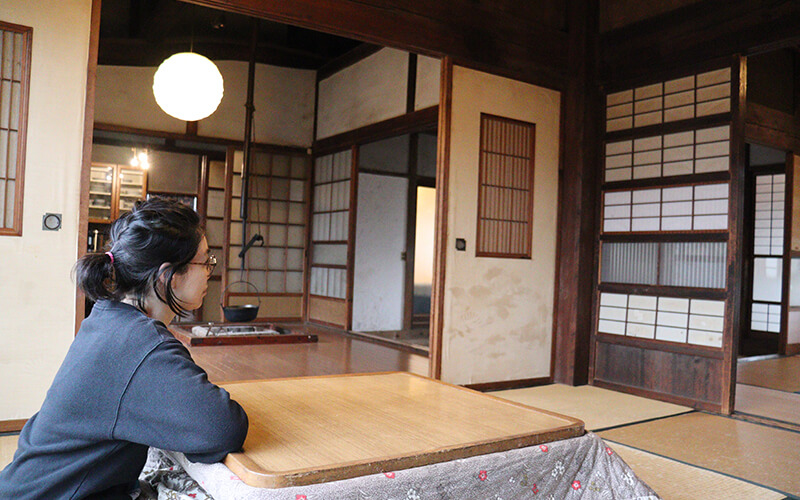

“Horigotatsu”
“Kotatsu” is a leg warmer consisting of an infrared heater positioned under a quilt-covered table. This kotatsu chair in the Japanese style room is in horigotatsu style, so you can stretch your legs and sit comfortably. It’s nice to sit around and warm up while chatting, resting, and looking outside.
“Engawa”
Have you ever seen scenes in Japanese dramas, anime, and manga where the main characters sit on the porch and chat or drink tea?
Engawa is a wooden walkway outside a Japanese style room such as a tatami room, and when the sliding door is opened, it becomes one with the tranquil scenery outside.
This is one of the characteristics of Japanese house architecture.
Let get away from the hustle and bustle of everyday life, sit on the porch, feel the breeze, and relax from the bottom of your heart.
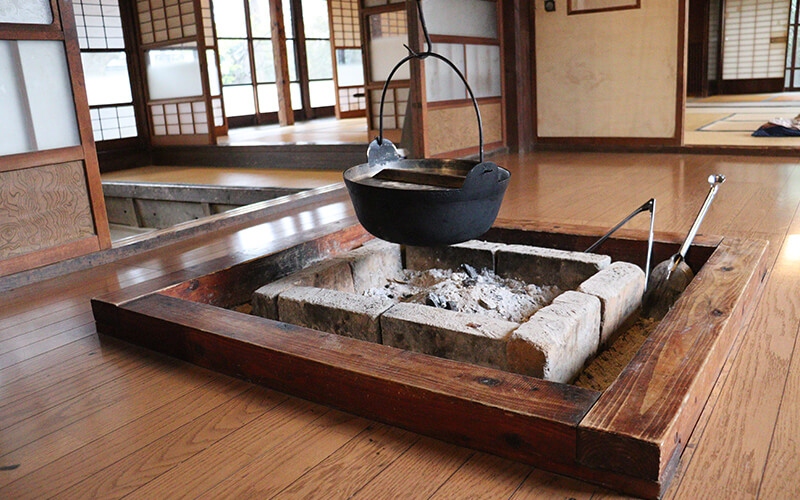

“Irori”
Here, you can enjoy the Irori(sunken hearth) cuisine, which is rarely experienced in Japan, starting from setting the fire.
The heat is adjusted with a hanging metal fitting called Jisaikagi (a pothook).
The hot pot and grilled dish will surely have a special taste just for you.
Just like having a fire in your room, it’s a pleasure to spend a relaxing time with family and friends around the Irori while eating. (Please be careful when handling fire.)
“Goemon bath”
There are still many more charms of “corot”. Among them, the “Goemon bath” is a facility that you should definitely try.
Covered with retro tiles, this round bath is exceptionally warm and will warm your body and soul during the cold season.
The Goemon bath is in the house located in the forest that appears in the famous Ghibli movie “My Neighbor Totoro”. It will be an opportunity to feel like an anime heroine!
In order to boil the water for this bath, you put branches and firewood in the furnace and make a fire. These tasks are also the best part of living in an old folk house.

“Kamado”
A long time ago in Japan, we used a “kamado” to cook rice.
This is also the same as the Kamado that appeared in “My Neighbor Totoro”.
Rice cooked in a wood-fired oven has a chewy texture that is different from rice cooked with electricity.
Please enjoy the taste of the rice that you have cooked yourself.
*Please bring your own food materials such as rice.
*Facility staff will explain how to use the facilities and equipment at check-in.
*Please check the facility website and YouTube (Japanese only) for instructions on how to use each facility.


Finally it’s farming Experience. Let’s go outside and experience the farming.
Right in front of Corot is a field where various seasonal vegetables grow.
If the timing is right, you can harvest seasonal vegetables.
This time we were able to harvest potatoes and vegetables.
We also saw rare butternut pumpkins and vegetables unique to Japan.
Corot’s parent company also operates restaurants and wholesale businesses, and the vegetables harvested in the fields are wholesaled to local restaurants, and it seems that they are local production for local consumption.
Next, let’s say hello to Mei chan the goat in the backyard.
She is friendly, but she seems to be very powerful, so please be careful when approaching Mei chan.


You can feel the history in every part of the building of Corot, so you will surely be able to feel what the life of a traditional Japanese farmer is like.
Highly recommended for those who want to relax physically and mentally in a Japanese farmhouse.
Recently, even though it is an old folk house, the Goemon bath has a water heater and a shower, and the kitchen is equipped with a gas stove, rice cooker, microwave oven, etc., and eventhough you can not use a Kamado stove, you can stay in the house without any problems.
So it is a way for those who want to enjoy a little of farming experience. No need to worry at all.
In addition, there is a BBQ set, a pizza oven, and a set where you can enjoy flowing somen noodles (Japanese vermicelli flowing in a half-cut bamboo pipe) depending on the season. Flowing somen noodles is known for a summer tradition in Japan, also called “Nagashi somen”.
So you can enjoy your stay in the large garden with everyone!

“Corot” is limited to one group per day, and can be used for day trips or overnight stays.
If you have the chance, please stay overnight and fully enjoy the traditional Japanese farm life.
This experience will surely be an unforgettable memory for you. Do not worry.
< Farm with a traditional folk house “Corot”>
Address: 2040 Yamaguchi, Tokorozawa City, Saitama Prefecture
Access: 15-minute walk from Seibu Sayama Line “Shimoyamaguchi Station” or “Seibukyujo-mae Station”
URL: https://www.corot.bz/en/


Let’s cycle around the area. There is a rental cycle station in front of Corot.
By using and registering a smartphone app that supports both Japanese and English, you can easily rent a bicycle and enjoy cycling in the surrounding area.
(When returning the bicycle, you can return it at your favorite rental cycle station anytime and anywhere.)*You can choose either Japanese or English for the operation screen of the bicycle.
Let’s ride a bicycle from Corot and start walking around Tokorozawa city!
Kurihara Shiitake Garden
Do you know shiitake mushroom picking?
At “Kurihara Shiitake Garden”, which is about 10 minutes on foot from Corot, you can pick rare log-grown shiitake mushrooms.
Shiitake mushrooms are cultivated using the traditional method of planting inoculum on natural wood, so the taste of the shiitake mushrooms is outstanding.
Also, since the shiitake garden here is a house, you can enjoy picking shiitake mushrooms even on rainy or cold days. Admission is free, and shiitake mushrooms can be purchased for 300 yen per 100g.
<Kurihara Shiitake Garden>
Business hours: Monday, Friday, Saturdays, Sundays, and holidays 10:00-16:00 (from late August to around May)
*Please make a reservation by 18:00 the day before.
URL: http://kurihara-kinoko.com
IMG_2030.jpg)
IMG_2034.jpg)
Bodaigi Pond
The first is the Bodaigi Pond near Corot, along the way there are rice fields and agricultural scenery.
Helps to refresh the body and mind while receiving the cool breeze.
The area around Bodaigi Pond is surrounded by dense forests.
It is a hidden healing place. And you can feel the coolness even in summer.
Due to a fountain flowing into the area, the surrounding area therefore has ponds, marshes, rice fields, and many animals and plant lives.
Bodaigi Pond used to be a wasteland because the rice fields downstream were abandoned. But with the activities of local associations, the beautiful Satoyama landscape has been restored.
This time we cycled around the area, but since there are walking paths as well, it would be nice if you could take your time to enjoy nature while trekking.
<Bodaigi Pond>
Address: Near 2050 Kamiyamaguchi, Tokorozawa City
Access: 15 minute walk from Seibukyujo-mae Station on the Seibu Railway Sayama Line/Yamaguchi Line
URL:https://www.city.tokorozawa.saitama.jp/kurashi/seikatukankyo/midori/ryokuchi/satoyamahozen/bodaigiikesatoyamahozenchiiki.html
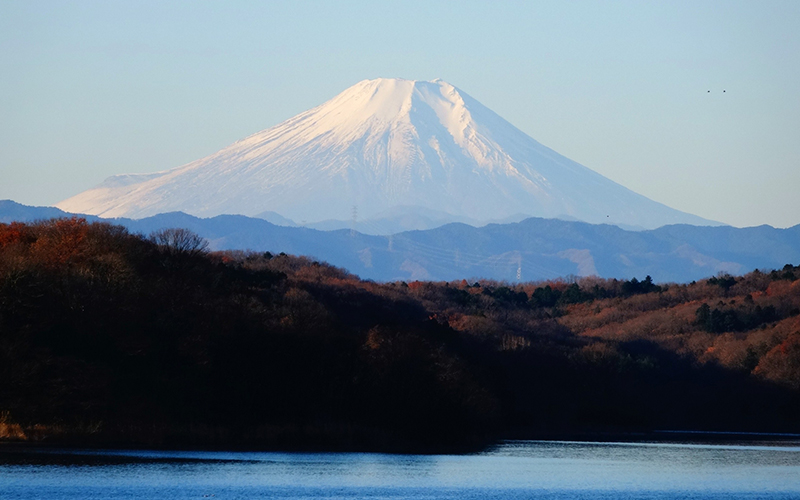

Lake Sayama
Lake Sayama, which is a place of relaxation for citizens, is an artificial lake built in 1934, and its official name is “Yamaguchi Reservoir”.
The surrounding area is well-maintained with walking paths and squares, and is popular with locals as a prefectural Sayama Nature Park.
There are benches and plays everywhere on the premises, making it ideal for picnics.
Cherry blossoms in spring, colored leaves in autumn, and Mt. Fuji on a bright sunny day.
It is not only the beautiful scenery of the four seasons, but also a famous bird-watching place.
In addition, due to its beautiful scenery, it has been selected as one of the “Top 100 Dam Lakes” and the “Top 100 Nature in Japan to Preserve in the 21st Century”.
When you come to Lake Sayama, be sure to cross the long embankment. You can see the beautiful lake on one side, and the city of Tokorozawa on the other side such as the roof of the Seibu Dome and the Ferris wheel of Seibuen Amusement Park, etc.
<Lake Sayama>
Address: Near Shorakuji Temple, Tokorozawa City, Saitama Prefecture
URL: https://en.chocotabi-saitama.jp/spot/34582


Totoro forest
The next destination, Totoro Forest, is located near Lake Sayama and is said to be one of the model locations for the Ghibli movie “My Neighbor Totoro”.
“Totoro Forest” collects donations for the purpose of preserving Satoyama, purchases a part of the land in Sayama Hills, and manages it as “Totoro Forest”.
Each forest is small, but by May 2022, it has expanded to 59 locations in the Sayama Hills and surrounding areas.
There are several walking trails in the forest. Here and there, you can come across facilities and scenery that remind you of the world of “My Neighbor Totoro”.
Please check the route before going. You can download the map from the website below.
While adjoining the city area, you can enjoy forest bathing that will make your mind and body happy at any time in the “Totoro Forest”, which feels like another world.
<Totoro forest>
Address: 351 Zagoiri Kamiyamaguchi, Tokorozawa City, Saitama Prefecture
URL: https://www.totoro.or.jp/totorofund/


Tokorozawa City Tourist Information and Product Center YOT-TOKO
At the end of your trip, be sure to stop by “Tokorozawa City Tourist Information and Product Center YOT-TOKO” to see the souvenirs and memorabilia.
In addition to selling Tokorozawa’s special products and goods, it also provides tourist information and holds regular markets in the event square.
In addition, at the adjoining café, you can enjoy Tokorozawa’s specialty “meat soup udon” and a rare hamburger sandwiched between the famous taro croquette.
After enjoying the nature of Satoyama, let’s fill your stomach with delicious “food” of Tokorozawa.
<Tokorozawa City Tourist Information and Product Center YOT-TOKO>
Address: 143-3 Matsusato, Tokorozawa City, Saitama Prefecture
business hours
[Product Center] Open all year round 9:00-17:00
[Parking lot] 9:00-21:00 (Closed after 21:00)
Access: 15 minutes by taxi from the east exit of Tokorozawa Station on the Seibu Ikebukuro Line/Seibu Shinjuku Line
From the east exit of Tokorozawa Station on the Seibu Ikebukuro Line or Seibu Shinjuku Line, take a bus bound for Higashi Tokorozawa Station, Shiki Station, or Atomi Women’s University, get off at Higashi Tokorozawa Station, and walk 12 minutes.
URL: https://yot-toko.jp
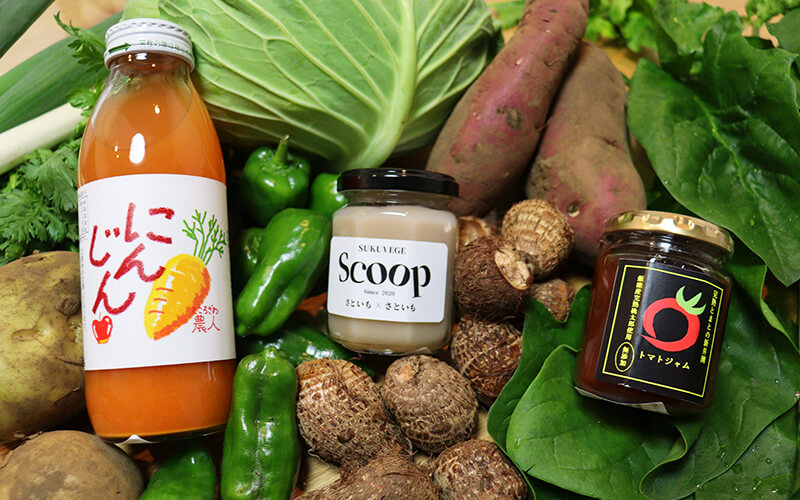
This time, we introduced farm experience and surrounding spots in Tokorozawa City, Saitama Prefecture, which is easily accessible from Tokyo.
The nostalgic and beautiful scenery spreads out in less than an hour from the city center, and you can have an experience that will make you forget the daily fatigue and hustle.
Next time you visit Tokyo, please take a trip to neighboring Saitama Prefecture and enjoy the nature, satoyama, and culture of Tokorozawa City in your own way.
I’m sure you’ll have a valuable experience that you don’t know yet and a fun memory.






